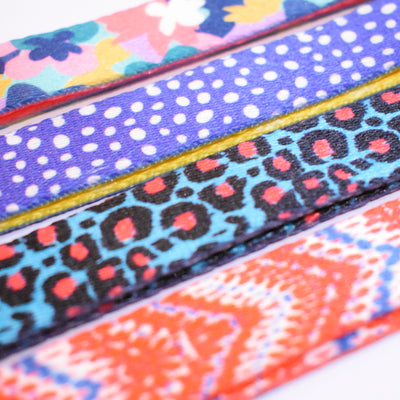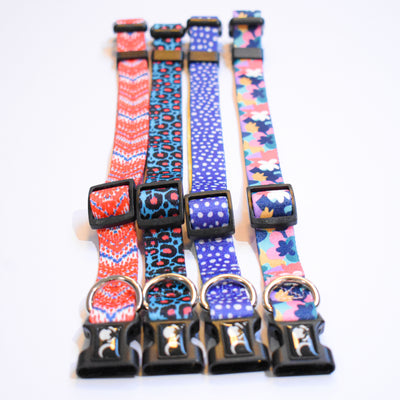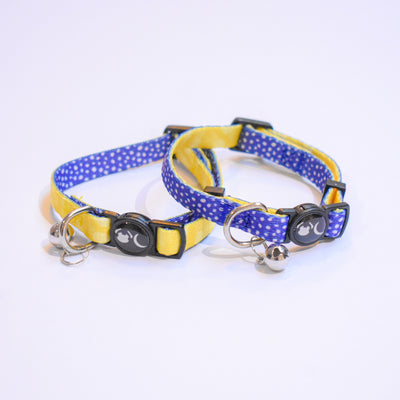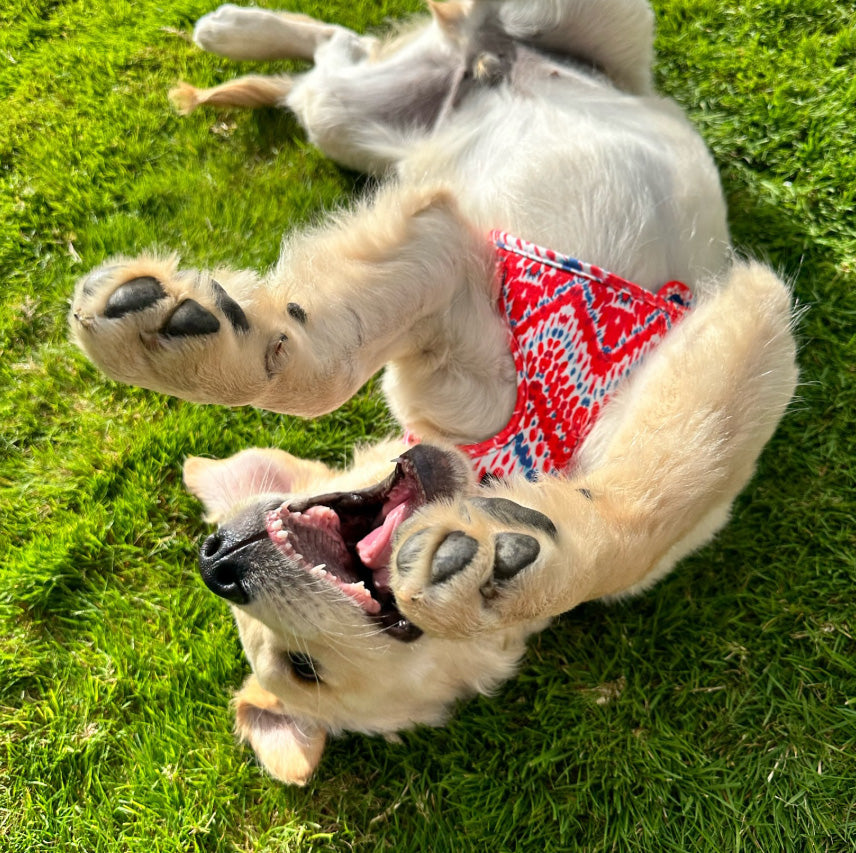Does your puppy bolt at the sight of a harness? You're definitely not alone! New dog owners face puppy training harness challenges that lead to frustration for everyone involved.
Your dog might be sensitive to physical contact, or simply hate anything going over their head. Yes, it is more complex to train with a harness than a collar, but the benefits make every effort worthwhile. Your puppy's comfort and safety improve significantly with a well-fitted harness, making walks enjoyable for both of you.
Here's the silver lining - you can turn your puppy's harness experience from stressful to enjoyable with the right approach and patience. Dogs often resist harnesses because they feel sensitive to touch or don't enjoy being petted. A slow and relaxed training approach works best, letting your puppy adjust naturally.
This piece will help you understand your puppy's concerns and build trust through positive reinforcement. You'll learn a step-by-step training plan that delivers results. Say goodbye to wrestling with your wriggling puppy or watching them run from the harness - soon you'll both be ready for stress-free, enjoyable walks together.
Choosing the Right Harness for Your Puppy
The right harness for your puppy is vital for comfort and control during training. Not all harnesses give you the same results, and a perfect fit can make the difference between peaceful walks and stressful outings.
Let's look at the different types. Mesh harnesses are perfect for calm puppies that don't pull, and they provide great comfort and flexibility. Webbed harnesses work well for well-behaved pups with straps fitting under their front legs. Your enthusiastic puppies who love to pull will do better with no-pull harnesses that give you control without neck pressure. These come with front clips to stop pulling or dual clips that add more control.
Safety depends on correct measurements. You'll need a soft measuring tape to wrap around your puppy's chest at its widest point, right behind their front legs. The lower neck measurement matters too, where the harness sits. When your puppy's size falls between two options, pick the larger size.
Your puppy's breed and body type play a big role. A 40lb Bulldog needs a different harness fit than a 40lb Greyhound because their bodies are built differently. Flat-faced breeds like Pugs or French Bulldogs benefit more from harnesses since they put less pressure on their breathing.
Nearly all harnesses come with adjustable straps, which are great because they let the harness grow with your puppy. A good fit should be snug but not tight - you should fit two fingers between the harness and your dog's body. The front chest strap needs to rest comfortably against the chest without dropping to the legs or riding up to the neck.
Some puppies don't like overhead harnesses, so try step-in harnesses that wrap around their body and snap in place. This step-in design makes harness training easier for sensitive pups.
Understanding Your Puppy’s Reactions to the Harness
Your puppy's first reaction to a new harness reveals a lot about their comfort level and mind set. Most puppies show confusion or uncertainty at first - they might freeze, wiggle too much, or try to escape. These aren't signs of bad behaviour but natural responses to something strange touching their body.
A puppy shows more through body language than barking. Uncomfortable puppies often drop their tails, pull their ears back, or look away. You might notice excessive panting or lip-licking - clear signs of stress. Some puppies just freeze up from worry. Learning these subtle signals helps you act before your puppy feels overwhelmed.
Puppies hesitate with harnesses for three main reasons. They're naturally wary of new things. The straps against their fur feel strange. And sometimes, they've had a bad experience with harness fitting before.
Breed characteristics matter too. Some breeds handle touching better than others. In spite of that, each dog's personality matters more than their breed - a bold Chihuahua might take to a harness faster than a shy Labrador.
Training works better at certain times of day. Puppies learn best after some exercise burns off extra energy, but before they get too tired. Picking these perfect moments to introduce the harness boosts your chances of success.
Patience isn't just important - it's everything in this process. A forced harness creates bad memories that take forever to fix. Understanding and respecting your puppy's signals are the foundations of all future harness training. These basics lead into the positive reinforcement methods we'll cover next.
Building Trust Through Positive Reinforcement
Positive reinforcement is the life-blood of successful training that helps control your puppy's harness behaviour. This method turns a potentially stressful experience into an enjoyable one. You can build trust with your furry companion by creating positive connections with the harness.
Start by showing your puppy the harness in a relaxed, familiar space like your living room or garden. Your puppy will feel secure in these familiar surroundings when meeting this new object.
Place the harness on the floor and scatter tasty treats around it. Your puppy can break down the harness while getting pleasant rewards. When your puppy feels at ease, hold up the harness and offer treats through the head-hole. This encourages them to push their nose through for their reward.
The best results come from high-value training treats that work especially when you have a picky puppy. Choose small, soft treats with strong aromas that will excite your puppy's senses. Training treats should be easy to break but won't fall apart in your pocket.
Your puppy needs to feel at ease with the clicking sound before you fasten the clips. Hold the harness while clipping and unclipping it. This lets them hear the sound and shows you their reaction. The harness goes over their head once they're comfortable with the noise. Give them a treat and fasten the clips around their body.
Your timing makes a significant difference in positive reinforcement training. Give rewards right after the desired behaviour to create clear connections in your puppy's mind. You can slowly increase the harness wearing time from seconds to minutes to hours. Remember to end each session on a positive note.
Watch your puppy's signals closely. Take a step back in training if they paw at the harness or try to move away. Your response to these signs shows your puppy they can trust you.
Regular, short sessions help your puppy learn better and are the foundations of successful harness training. Stay patient and celebrate small wins. Even a simple sniff of the harness deserves praise in early training.
Create A Training Plan
Each puppy needs a different approach to control training. Your pup's temperament, past experiences, and gear-related challenges should shape their individual-specific training plan.
A successful harness training plan needs realistic goals. Break down the process into smaller, achievable steps instead of expecting your puppy to wear the harness for long periods right away. Your first goal might be getting your puppy to walk up to the harness, and later they might wear it comfortably for five minutes.
Your training environment is vital for success. A quiet, familiar space with few distractions makes the perfect starting point - your living room or garden will work well. Your puppy's confidence will grow, and you can slowly introduce more challenging spaces with extra stimulation.
Short training sessions work better than long ones. Your puppy will learn more from 5-10 minute sessions spread throughout the day than one long session. Their attention span is limited, so brief but regular practise creates better learning opportunities.
Rest between training sessions helps your puppy learn, even though this might seem odd. Dogs process new skills during rest periods - they're latent learners. Your puppy should play first to release extra energy. Then start harness training when they're calm but alert.
Your training plan's life-blood is consistency. The same approach, commands, and rewards will help your puppy understand what you want. You should stay flexible within your routine and adjust if something doesn't work - this allows for individual-specific training.
Small victories deserve celebration along the way. Your puppy's progress deserves enthusiasm, whether they just smell the harness or wear it briefly. This positive approach builds their confidence and creates momentum toward stress-free harness wearing.
Final Thoughts on Using Training Success
Training your puppy to wear a harness becomes a rewarding experience with patience and understanding. This piece explored several key aspects: choosing the right harness type, understanding your puppy's unique reactions, using positive reinforcement, and following a tailored step-by-step plan. These elements contribute to stress-free training success.
Your puppy's comfort should stay paramount during this process. Moving at their pace rather than rushing builds trust and prevents setbacks. Most puppies resist harnesses at first because of unfamiliarity or sensory sensitivity, not stubbornness or disobedience.
Time and consistency create amazing results in harness training. Hesitant sniffing often turns into enthusiastic tail wags when the harness appears. This change happens because your puppy connects the harness with positive experiences – treats, praise, and fun walks.
Challenges will arise during training without doubt. Each small victory deserves celebration as part of learning. Your puppy might just tolerate the harness today or run toward it tomorrow. Progress happens differently for every dog.
This guide gives you practical tools to make harness training fun for both you and your puppy. The goal goes beyond getting your puppy to wear a harness – it builds a foundation of trust and communication that strengthens your bond over the last several years.
Your patience matters - both with yourself and your puppy. Training takes time, and setbacks happen even with great preparation. Your steadfast dedication to positive, force-free training methods shows your care for your puppy's wellbeing. Those harness struggles will soon become distant memories as you and your confident companion start countless adventures together







